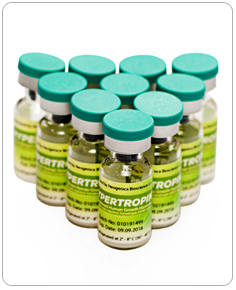How human growth hormone works
 Human growth hormone (somatotropin) is the pituitary released hormone that is essential for the normal growth and development of a child to an adult. Without sufficient levels of the hormone, a child will never reach their full growth potential. Adults also produce GH, and the hormone continues to play an important regulatory role throughout our lives.
Human growth hormone (somatotropin) is the pituitary released hormone that is essential for the normal growth and development of a child to an adult. Without sufficient levels of the hormone, a child will never reach their full growth potential. Adults also produce GH, and the hormone continues to play an important regulatory role throughout our lives.
GH is produced from the pituitary, which is found within the hypothalamus in the brain. The pituitary gland is a controlling gland, and the hormones that it secretes into the blood stream will control the actions of many other glands within the body. For this reason the pituitary is also known as the “master gland”
Clinical and scientific research on GH, has usually focused on childhood GH deficiency, but a deficiency throughout adulthood can also be very serious. Adults require an appropriate level of GH for the correct regulation of body fat to muscle, metabolic processes and cholesterol regulation.
With insufficient levels of GH, the crucial metabolic processes within the body will not work well.
GH’s influence on growth
GH alone will not promote healthy growth. Growth is determined by a myriad of factors, and of paramount importance are a child’s general health, and the nutrition that the child receives. Hormones also regulate growth
GH is not the only hormone that will influence a child’s growth. The pituitary gland (located in the base of the brain) also releases other thyroid stimulating hormones into the blood stream. The pituitary also releases adrenocorticotropic hormones, luteinizing hormones and follicle stimulating hormones, all of which affect growth; although through the action of other essential glands. The largest hormone influence on growth however comes from GH. GH is the most important human growth regulator in the body.
GH is the hormone that regulates and influences the development and growth of bones and other body tissues. GH works by stimulating the epiphseal growth plates within the bones. These growth plates are responsible for the elongation and growth of the bones, and without sufficient GH influence, the bones will not reach their real growth potential, and the body will remain smaller than would be ideal.
GH also works as an indirect influence on growth. GH causes the release a protein named the insulin like growth factor-I (IGF-I). (IGF-I) is released from the bodily tissues and leads to increased muscle, bone, and other tissue growth throughout the body. (IGF-1) regulates the growth that is influenced by GH; and the release of (IGF-I) also cyclically regulates the increasing release of more GH. GH hormone will regulate the creation of proper bone density during and after growth. This cyclical relationship between GH and (IGF-I), in conjunction with other bodily processes, are responsible for influencing and regulating the growth that causes a child to mature into a full sized adult. This interplay of hormones and proteins remain essential to our correct body development and proportions, even after we have reached our full growth potential.
The influence of GH on metabolism
GH is essential for the proper growth of a child to a well developed adult, but GH remains a vital hormone in the adult body. GH has a major influence on the correct chemical metabolism within the body.
Metabolism refers to the way that the body coverts food energy appropriately into either waste, energy for immediate use, or tissue storage. GH influences this metabolism of food in a number of ways. GH will regulate the breakdown of fats for energy usage, the transference of molecules, the conservation of bodily sugars and the regulation of proteins into muscle mass. GH is an essential hormone for correct maintenance of good bodily composition. GH also influences the storage ratios of good to bad cholesterol, and is vital for proper heart muscle functioning. The GH hormone will also influence correct and healthy bone density.
What happens with a deficiency of GH?
GH deficiency in a child is a syndrome referred to as pediatric GH deficiency. This childhood deficiency will not allow for the normal growth and development of a child to a healthy and full sized adult.
In adults, a deficiency of GH will result a number of negative bodily changes, and is referred to as adult GH deficiency.
References
Guyton AC, Hall JE. Textbook of Medical Physiology. 9th ed. Philadelphia, Pa: WB Saunders; 1996.
Lifshitz F, ed. Pediatric Endocrinology. 4th ed. New York, NY: Marcel Dekker Inc; 2003.
Wilson JD, Foster DW, Kronenberg HM, Larsen PR, eds. Williams Textbook of Endocrinology. 9th ed. Philadelphia, Pa: WB Saunders; 1998.







